AFG: Chloride-Free Sodium Source + Acidification
The composition and strong acidic properties of AFG (animal feed grade sodium bisulfate) make it a highly valuable addition to poultry diets at all dietary phases. Research has shown its ability to support performance in challenged and unchallenged conditions, improve litter quality and reduce ammonia emissions, while playing an important role in a Salmonella control program.
Quick Links to
Explore AFG Research by Topic
Support Performance in Challenged and Unchallenged Conditions
As a mineral acid with a pKa of 1.99, AFG lowers feed pH and reduces buffering effects of diets in the upper GI tract. By working to maintain gut integrity, AFG positively impacts bird performance.
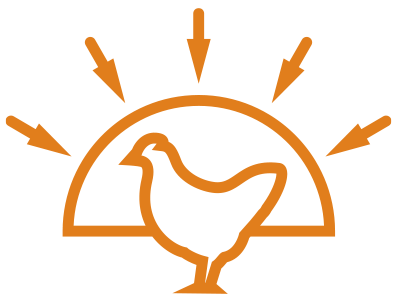
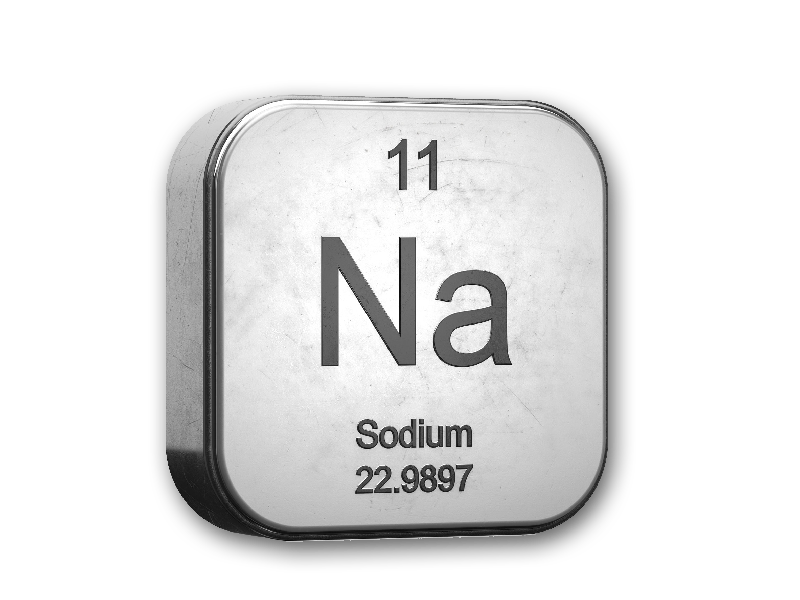
Your Sodium Source Matters
AFG Outperforms the Competition in Broilers
For years, there were few sodium options, which often made the addition of salt, sodium bicarbonate or sodium sesquicarbonate in broiler diets a standard. With the introduction of AFG, now you can meet the same sodium and chloride requirements while gaining significant performance advantages.
Learn more about AFG
Performance Improvements + Reduction in Ammonia
AFG helps preserve proper electrolyte balance by eliminating excess chloride, which has been shown to help reduce litter moisture – a main contributor of excess ammonia generation and paw lesions. A study by Dr. Hong Li at the University of Delaware, which demonstrated similar performance improvements as previous studies, also showed adding AFG to diets can significantly reduce ammonia emissions.
Three flocks were raised in two houses, which shared the same settings and management practices, each starting with 2,400 day-old Ross 708 chicks over a 49- to 52-d grow out. Each house started with new softwood shaving and no litter amendment.
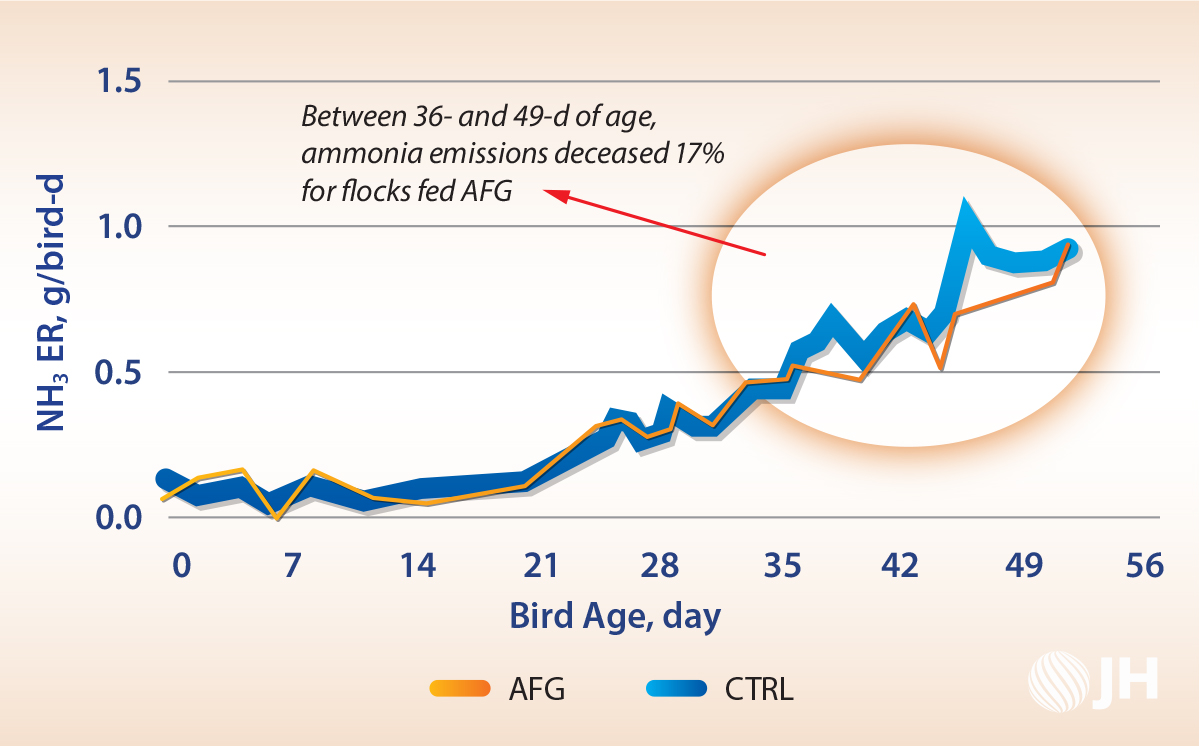
During the first 5 weeks of the three flocks, there was no difference in ammonia emission rate between the two houses. However, flocks fed AFG had a 17% lower ammonia emission rate between 36 and 52 d of age.
Reduced ammonia means reduced fuel use. Over three flocks, houses with AFG-fed birds used nearly 25% less fuel than the control.
Ammonia emissions were reduced 10% overall during three flocks
Salmonella Control
Animal feed grade sodium bisulfate is used as a cost-effective way to fight Salmonella contamination. Research from Kansas State University showed a reduction of Salmonella Typhimurium levels in the chicken fat commonly used in pet foods when treated with animal feed grade sodium bisulfate.
In the study, the kibble of 10 commercial pet foods (5 cat foods and 5 dog foods) was inoculated with Salmonella enterica on d 0 and then coated with 2.2% spray-dried chicken liver fat and sodium bisulfate at concentrations of 0.60 and 0.80 for cat food and 0.20 and 0.40 for dog food. Researchers found that by day 14:
Sodium bisulfate reduced Salmonella levels by 2 logs in cat food and 1 log in dog food.
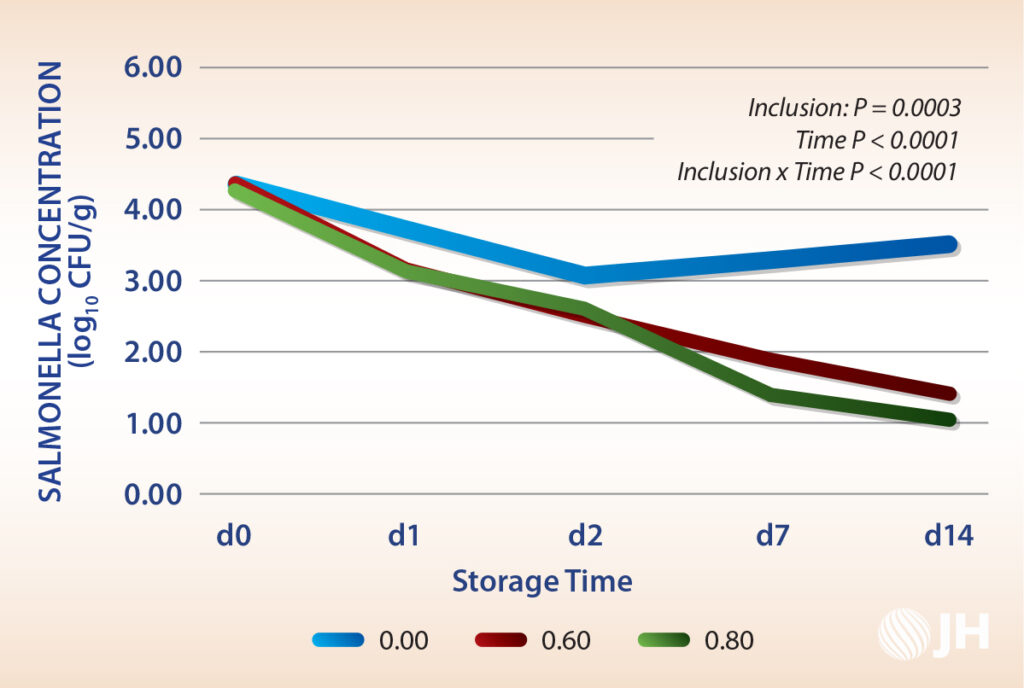
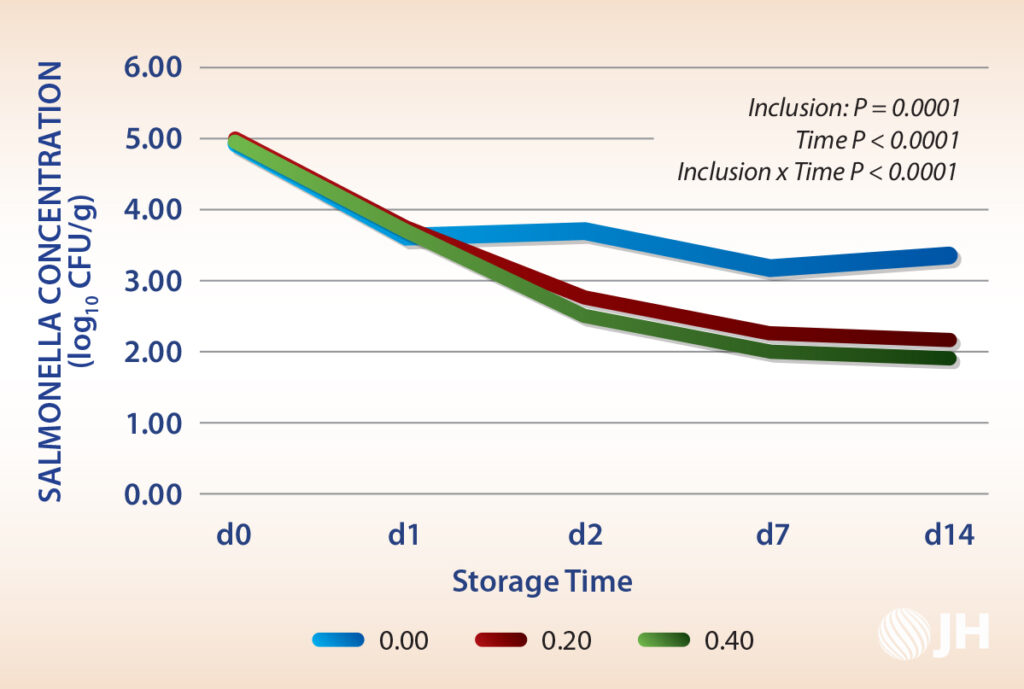
A study by Muckey et al. showed sodium bisulfate reduced Salmonella Typhimurium concentration by 1 log and was the most effective dry product tested for reducing Salmonella on the surface of animal feed manufacturing equipment.
New research is proposing the use of AFG in a Salmonella control strategy for poultry feed from farm to plant. Feed ingredients have been documented to be a source of Salmonella contamination. While there are some interventions like extended heat-treatment and formaldehyde-based products, these may have a negative impact on feed nutrients or worker safety.
Uniform and Easy to Mix
In addition to efficacy, AFG offers formulators ease of use. A study by Dr. Chad Paulk at Kansas State University showed that AFG can be adequately mixed in the diet when added with micro ingredients for uniform feeding. It was concluded that increasing AFG in the diet reduced (P < 0.001) pH and increased the sodium and sulfur content (P < 0.001) of the diet.
